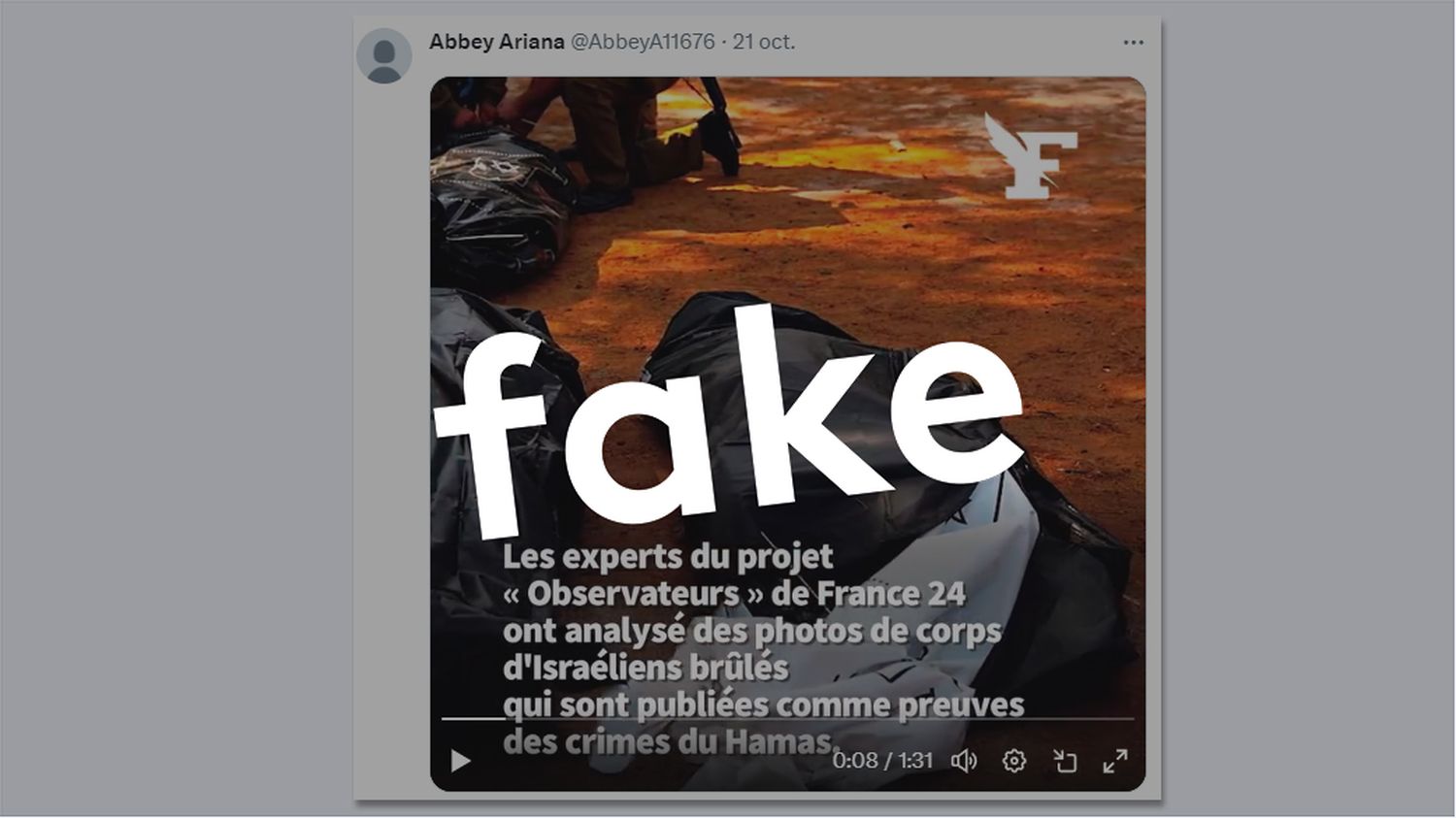Since the start of the conflict between Israel and Hamas, disinformation has been massive on social networks.
While the international context is particularly tense with the Israel-Hamas war, disinformation is massively present on social networks. In recent weeks, many false images have circulated but in recent days, we have seen the emergence of a new form of disinformation with videos which use the codes of fact-checkers, but full of falsehood.
It was the media France 24 which alerted first after having discovered in recent days a video of just over a minute which uses the codes of French media. We see, for example, the logo of the newspaper Le Figaro. The France 24 fact-checking service, Les Observateurs, is also cited. According to this video, the journalists demonstrated that Israel published false photos to prove Hamas’ crimes. Except that France 24 never published this investigation, Aude Dejaifve, journalist at Observateurs, explains to franceinfo: “QWhen we saw the report, we said to ourselves ‘no, we’ve never published anything like that’, we immediately saw that it was false.”
False reports to discredit Israeli authorities
“Even the extracts where we see our editor-in-chief are old extracts because he is older today, continues Aude Dejaifve. So we saw straight away that these were videos from some time ago. This is content that targeted us and wanted to discredit the Israeli authorities by using a pseudo-investigation that we allegedly carried out. And all of this is completely false.” This is not the first time that articles or videos have been pastiched to make people believe that they are true, but what is new, particularly since the war in Ukraine, is that these false reports use the verification codes of information.
THE @Observers @FRANCE 24 were targeted by a video imitating the style of @Le Figaro.
According to this video, we determined that images showing bodies of Israeli civilians being burned by Hamas were false. Our editorial staff has never published anything like this. [1/10] ⤵️ pic.twitter.com/TSbYe2gLX3
— Info or Intox 🔎 – France 24 (@InfoIntoxF24) October 23, 2023
Who is behind these falsehoods and videos? We don’t know precisely, but it could, for example, be foreign interference. In the case of the false video which usurps the identities of France 24 and Le Figaro, our colleagues from France 24 have identified numerous accounts on X, formerly Twitter, which massively shared the video.
These accounts are all recent, created less than a month ago, which suggests a coordinated action. Especially since on X (but also on a large part of social networks), moderation is limited. The European Commission opened an investigation in October targeting the former Twitter, TikTok, Facebook and Instagram for the alleged dissemination of “false information”.
Videos increasingly difficult to detect
How to protect yourself from these videos? VSIt’s not always obvious, especially since the diversions are being carried out better and better. To try to detect fake videos, you have to pay close attention to small details.like writing: lhe sentences are a little longer, convoluted, sometimes with spelling mistakes. HASIf you have the slightest doubt, it is better to go directly to the media site. SIf the video is not there, that potentially means that it does not come from them.
